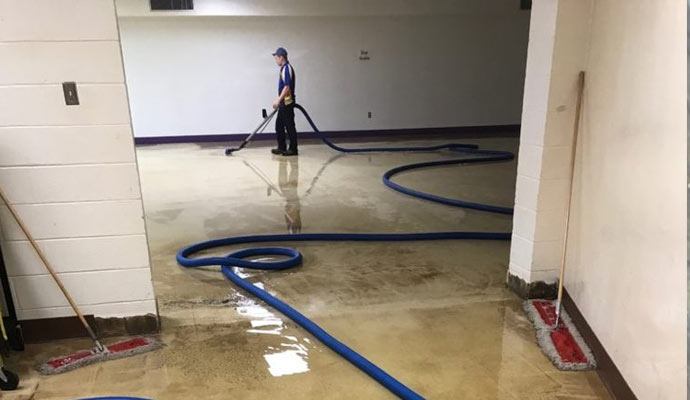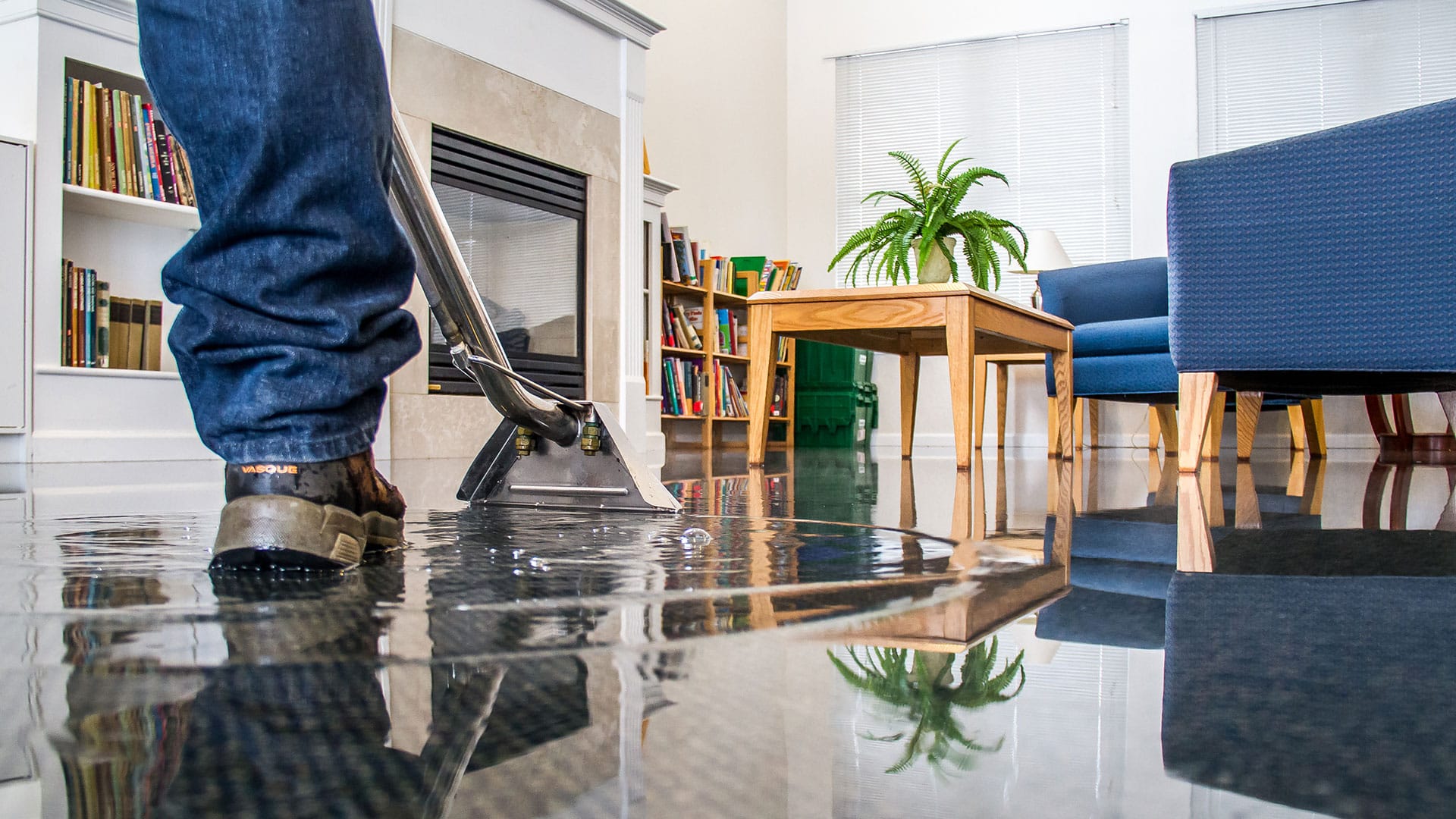Common missteps to avoid when choosing Water Damage Restoration services
Water Damage Restoration 101: Comprehending the Process and Cost
Water damage can strike all of a sudden, leaving homeowners in a state of complication. Understanding the remediation process is crucial for reliable healing. From examining the damage to selecting the appropriate service provider, each action impacts the overall outcome and price. Variables such as the sort of water damage and seriousness likewise play a considerable function. What are the specific methods used in remediation, and just how can one get ready for possible costs?
Kinds Of Water Damage

Initial Assessment and Examination

Water Removal Methods
Complying with the preliminary assessment, reliable water removal strategies are utilized to mitigate damage and protect against additional issues. These strategies involve the usage of specific tools such as industrial-grade vacuum cleaners and completely submersible pumps - Water Damage Restoration. The choice of method relies on the quantity of water present and the sort of materials impacted. For standing water, completely submersible pumps are normally utilized for rapid elimination, while vacuum cleaners are optimal for extracting water from rugs and upholstery. Furthermore, progressed approaches like water extraction mats might be utilized for hard-to-reach areas - Flood Cleanup Services. The objective is to remove as much water as feasible, decreasing the capacity for mold and mildew development and structural damage. Motivate and reliable water extraction is important in the overall water damage repair process
Drying Out and Dehumidification Process
As soon as the water extraction is total, the drying and dehumidification process becomes vital to recovering the affected area. This phase usually uses industrial-grade dehumidifiers and air movers to properly decrease dampness levels. The dehumidifiers attract moist air, removing excess humidity, while air moving companies circulate air to speed up dissipation. Monitoring devices is commonly utilized to track moisture and temperature level levels, making sure perfect drying problems. The duration of this process can differ relying on the level of the water damage and ecological factors. It is important to thoroughly dry all impacted products, including walls, flooring, and furnishings, to stop mold and mildew development and architectural damage. Proper execution of this action is critical for a successful reconstruction end result.
Cleaning Up and Sanitizing Damaged Areas
A thorough initial assessment and assessment of influenced locations is crucial to determine contamination levels when the drying out process is complete. Water Damage Restoration. Efficient cleansing methods and proper items must after that be employed to eliminate debris and spots. Lastly, sanitization and sanitation techniques are vital to guarantee that harmful pathogens are removed, recovering the area to a risk-free condition
First Evaluation and Inspection
Prior to starting any type of restoration efforts, a thorough preliminary analysis and inspection of the influenced areas are vital for reliable cleaning and sanitizing. This procedure involves identifying the level of water damage, identifying the resource of the water invasion, and assessing the products impacted. Examiners typically seek signs of mold and mildew growth, architectural stability concerns, and damaged valuables. The analysis additionally consists of inspecting moisture levels using specific tools to ensure no covert water pockets continue to be, as these can result in more difficulties. Documenting the findings is crucial for intending the next steps in the reconstruction process. A comprehensive initial analysis makes it possible for remediation experts to devise a targeted strategy for reliable cleansing and sanitizing, eventually decreasing damage and health dangers.
Cleaning Methods and Products
Reliable cleaning and sterilizing of water-damaged locations need a variety of methods and items tailored to the particular products affected. For porous surfaces like drywall and carpeting, extraction methods are important to remove excess dampness, followed by deep cleansing with specialized cleaning agents. Non-porous products such as ceramic tile or steel can be cleaned up utilizing commercial-grade cleaners that efficiently eliminate pollutants. Heavy steam cleaning is another effective technique, especially for carpetings and upholstery, as it makes use of high temperature levels to eliminate microorganisms and mold (Water Damage Restoration). Additionally, green products are progressively prominent for their security and efficacy - Mold Remediation After Water Damage. Ultimately, selecting the appropriate cleaning methods and products not just ensures immediate cleanliness however likewise aids in protecting against further damage and carcinogen connected with water intrusion
Sanitization and Disinfection Methods
When addressing water damage, correct sanitization and sanitation methods are necessary to ensure the security and health and wellness of the damaged environment. After preliminary cleansing, surfaces must be treated with appropriate disinfectants to remove microorganisms, mold and mildew, and bacteria that prosper in wet conditions. Typical approaches include making use of EPA-approved chemical disinfectants, which can be used through splashing or cleaning techniques. In addition, ultraviolet (UV) light systems can efficiently disinfect areas by neutralizing bacteria without severe chemicals. The choice of approach commonly depends on the kind of products impacted and the level of contamination. Eventually, thorough sanitization not only recovers a risk-free space yet likewise aids avoid future wellness risks related to sticking around moisture and mold development.

Repair Services and Restoration Options
Evaluating the damage triggered by water direct exposure is vital for establishing the suitable repair services and restoration choices. House owners may deal with various concerns, including damaged drywall, deformed flooring, and compromised structural aspects. Depending on the extent of the damage, repairs may entail changing areas of drywall, installing brand-new floor covering, or reinforcing structural beam of lights. In instances of extreme damage, full replacement of damaged products may be needed. Additionally, specialist conservators often recommend using dampness meters to evaluate covert moisture levels prior to choosing on the most effective strategy. It is essential to act without delay to stop mold and mildew development and additional degeneration. Selecting the ideal choices not only restores the home but additionally ensures long-lasting security and functionality.
Factors Affecting Restoration Expenses

The degree of water damage directly impacts the repair costs home owners can anticipate to incur. Variables such as the source of the water, the period of exposure, and the afflicted products significantly affect pricing. Clean water damage from a damaged pipeline is usually much less pricey to restore contrasted to damage caused by sewage. Furthermore, the degree of contamination dictates the need for specialized cleansing and disposal solutions, further boosting expenses. Geographic place additionally plays a function, as local labor prices and availability of repair solutions can differ. Ultimately, the urgency of the reaction impacts prices; quicker treatments usually cause decrease overall costs by protecting against further damage. Understanding these factors is important for house owners when approximating repair expenses.
The 3 key kinds of water damage are classified based on contamination degrees: tidy water, grey water, and black water. A thorough initial analysis and assessment are crucial steps in the water check my source damage repair process. For standing water, completely submersible pumps are generally used for quick elimination, while vacuum cleaners are suitable for drawing out water from rugs and upholstery. The extent of water damage straight affects the restoration costs home owners can expect to incur. Clean water damage from a damaged pipe is normally less pricey to recover contrasted to damage created by sewage.